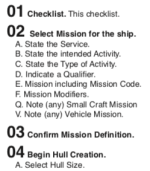Spinward Flow
SOC-14 5K
A versus M versus R: Why Bother?
You're making a distinction without a useful difference.The fact that the Merchant is not a Trader is a near-universal fact.
You're trying to say that passenger liners aren't merchants or traders (it's not like they "trade" passengers) ... while sidestepping the fact that most passenger liners are commercial ventures.
Freight vs Cargo ... is a difference in semantics at the naval architect's office. The exact same ship class/design can do BOTH of those things, because at the ship design level it's just cargo capacity.
Scheduled route vs unscheduled tramp ... again, at the naval architect's office the difference is one of semantics. The exact same ship class/design can do BOTH of those things, because at the ship design level the question of HOW the ship operates (scheduled vs unscheduled) is up to the owner/crew. It's not a difference that modifies the coding of the ship.
And that's before we even get into the fact that ships (commercial types particularly) can be reconfigured/retrofitted to change the "mix" of their passenger and cargo capacity.
From my perspective, ships that are primarily operated for (legitimate) commercial profit all fall into the same primary code ... MERCHANT ... and what "kind" of merchant they are then a matter of the qualifier code.
KISS.


